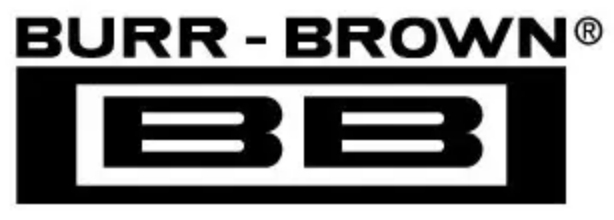Excellent internal design and layout techniques provide low
signal distortion, high output level (+27dBu), and a low
noise floor (–98dBu). Laser trimming of thin film resistors
assures excellent output common-mode rejection (OCMR)
and signal balance ratio (SBR). In addition, low dc voltage
offset reduces errors and minimizes load currents.
For best system performance, it is recommended that a high
input-impedance difference amplifier be used as the re-
ceiver. Used with the INA134 (G = 0dB) or the INA137 (G
=
±6dB)
differential line receivers, the DRV134 forms a
complete solution for driving and receiving audio signals,
replacing input and output coupling transformers commonly
used in professional audio systems (Figure 2). When used
with the INA137 (G = –6dB) overall system gain is unity.
AUDIO PERFORMANCE
The DRV134 was designed for enhanced ac performance.
Very low distortion, low noise, and wide bandwidth provide
superior performance in high quality audio applications.
Laser-trimmed matched resistors provide optimum output
common-mode rejection (typically 68dB), especially when
compared to circuits implemented with op amps and discrete
precision resistors. In addition, high slew rate (15V/µs) and
fast settling time (2.5µs to 0.01%) ensure excellent dynamic
response.
The DRV134 has excellent distortion characteristics. As
shown in the distortion data provided in the typical perfor-
mance curves, THD+Noise is below 0.003% throughout the
audio frequency range under various output conditions. Both
differential and single-ended modes of operation are shown.
In addition, the optional 10µF blocking capacitors used to
minimize V
OCM
errors have virtually no effect on perfor-
mance. Measurements were taken with an Audio Precision
System One (with the internal 80kHz noise filter) using the
THD test circuit shown in Figure 3.
Up to approximately 10kHz, distortion is below the mea-
surement limit of commonly used test equipment. Further-
more, distortion remains relatively constant over the wide
output voltage swing range (approximately 2.5V from the
positive supply and 1.5V from the negative supply). A
special output stage topology yields a design with minimum
distortion variation from lot-to-lot and unit-to-unit. Further-
more, the small and large signal transient response curves
demonstrate the DRV134’s stability under load.
OUTPUT COMMON-MODE REJECTION
Output common-mode rejection (OCMR) is defined as the
change in differential output voltage due to a change in
output common-mode voltage. When measuring OCMR,
V
IN
is grounded and a common-mode voltage, V
CM
, is
applied to the output as shown in Figure 4. Ideally no
differential mode signal (V
OD
) should appear. However, a
small mode-conversion effect causes an error signal whose
magnitude is quantified by OCMR.
+18V
1µF
V
IN
4
+V
O
7
8
V
OD
1
–V
O
600Ω
1µF
V
CM
= 10Vp-p
–18V
OCMR = –20 Log
300Ω
(1)
300Ω
(1)
6
DRV134
Gnd
3
5
2
(
V
OD
V
CM
)
at f = 1kHz, V
OD
= (+V
O
) – (–V
O
)
NOTE: (1) Matched to 0.1%.
FIGURE 4. Output Common-Mode Rejection Test Circuit.
+18V
+18V
1µF
+V
O
7
8
R
L
1
–V
O
+In
3
R
1
R
2
4
Test Point
or
–In
2
INA137
7
1µF
V
IN
4
6
DRV134
2
3
5
5
1
6
V
OUT
1µF
1µF
–18V
NOTE: Cable loads, where indicated, are Belden 9452 cable.
–18V
FIGURE 3. Distortion Test Circuit.
®
9
DRV134, 135

 BURR-BROWN [ BURR-BROWN CORPORATION ]
BURR-BROWN [ BURR-BROWN CORPORATION ]